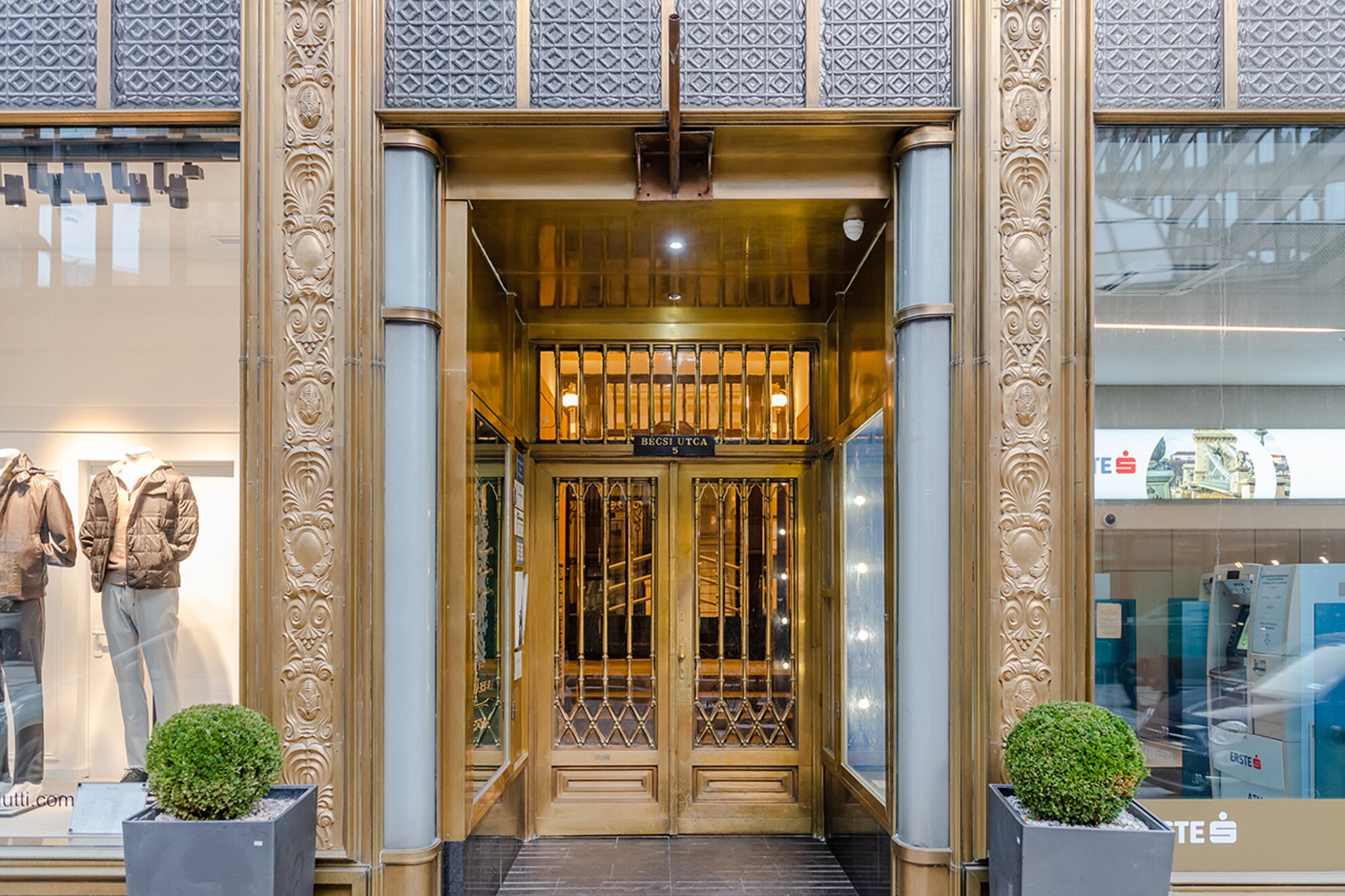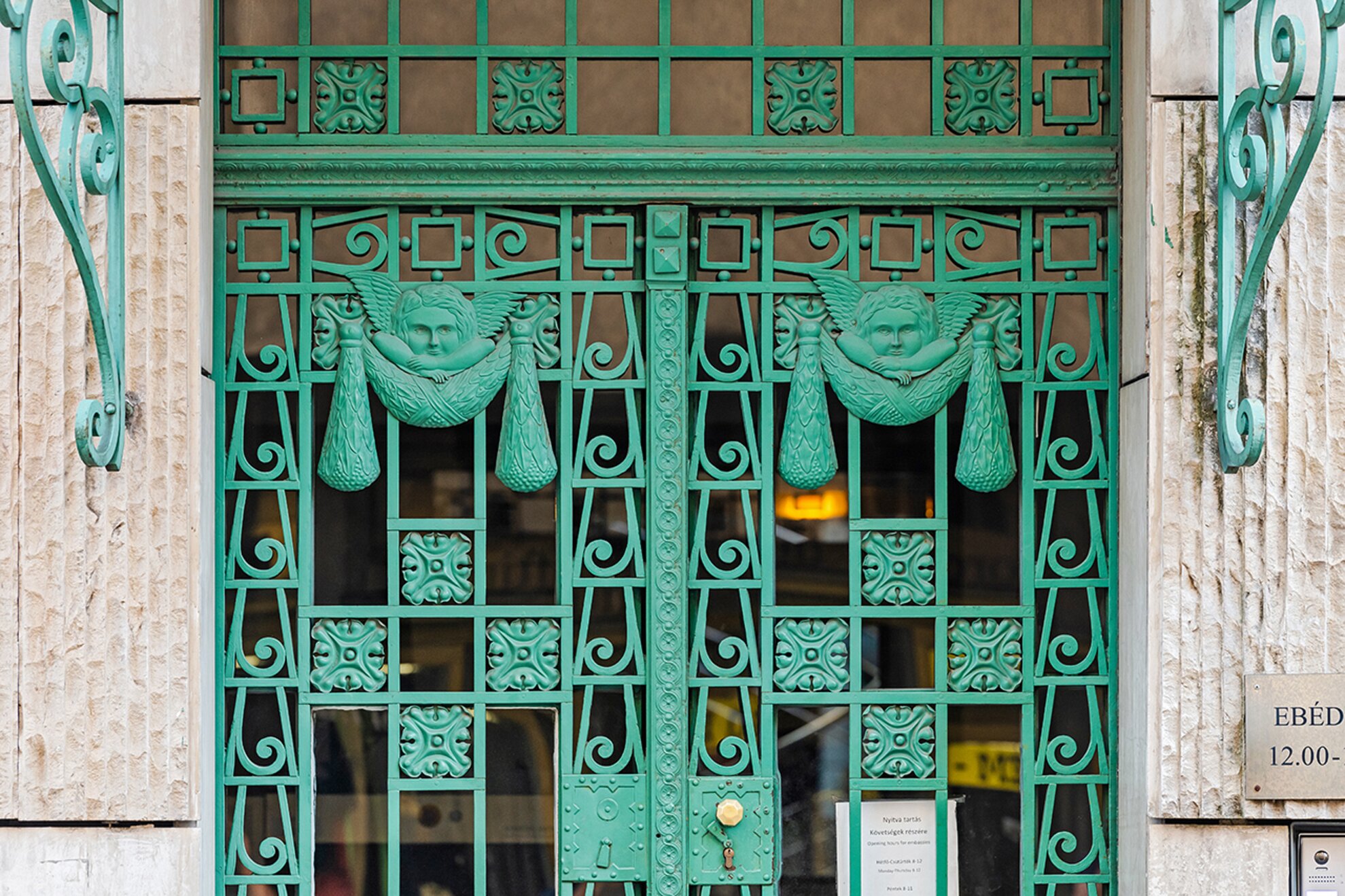Lining showcase boulevard Andrássy út is a number of beautiful buildings, each fronted by an ornate doorway and many hiding a secret tale or two. Designed by Vilmos Freud, the Wahrmann Palace was built for namesake Lipótváros MP Mór Wahrmann. Director of the Pannónia Steam Mill, he was keen to keep up with the architectural trends of the day.
In the 1930s, the National Association of Independent Engineers operated here, organising literary evenings during which renowned writer, Mihály Babits and famed poet, Attila József, read their latest pieces.
It’s also worth stopping in front of the three-storey building to admire the statues created by sculptor,
Alajos Stróbl, also responsible for the mounted figure of St Stephen at Buda Castle.



The doorway on Bolyai utca in wealthy Rózsadomb appears Chinese but in fact it belongs to the villa of a former Hungarian prime minister. The Asiatic association is no coincidence: Sándor Simonyi-Semadam was an enthusiastic researcher of Eastern languages, and as a member of the Hungarian-Japanese Society, he was keen on developing cultural relations between the two countries.
He was also Minister of Foreign Affairs and Home Affairs, and the Treaty of Trianon was signed during his leadership after World War I. The villa fence evokes the Chinese moon.




The pretty building covered with white stone on
the corner of Bem József utca and Bem rakpart on the Buda side was actually an
Art-Nouveau residential building remodelled beyond recognition in
the 1990s.
In this block today operates the Ministry of Foreign Affairs, and on
the glass floor of the lobby you can see the Kakas Bastion, unearthed by archaeologists during renovation. Incidentally, the celebrated
actress of the day, Sári Fedák, also lived here when she took a job as
a nurse at a military hospital at the nearby Radetzky Barracks.



At first glance, the doorway of Király utca 34 is grinning like a Cheshire cat, although it doesn’t lead to Wonderland. The building became infamous because of a former resident, a musical director who lost all his money gambling and raped his own daughter.




The neo-Gothic villa with a pointed tower and rose windows on the corner of Török Pál utca could easily pass for a small medieval castle if it didn't happen to house the School of Visual Arts.
Students
specialise in one of the artistic branches, but everyone learns theory and
freehand drawing. Renowned Hungarian poet and translator Krisztina Tóth, inventor Ernő Rubik of Cube fame and actor Győző Szabó all studied here.


There are several intriguing villas which once housed banks along central Nádor utca on the Pest side. If you stand in front of No.6, you may feel this dark, grey building was built sometime in the 1950s, but a closer look reveals a carved mahogany door decorated with plants and tendrils, characteristic of Art Nouveau and Art Deco.
The plans for this villa originally built for the Hungarian-Czech Industrial Bank are credited to architect Béla Málnai, but in the end, they wove together several designs submitted for the tender. The results show Art-Nouveau signs as well as the interior: the Finance Hall has been enriched with detailed wood carvings.









